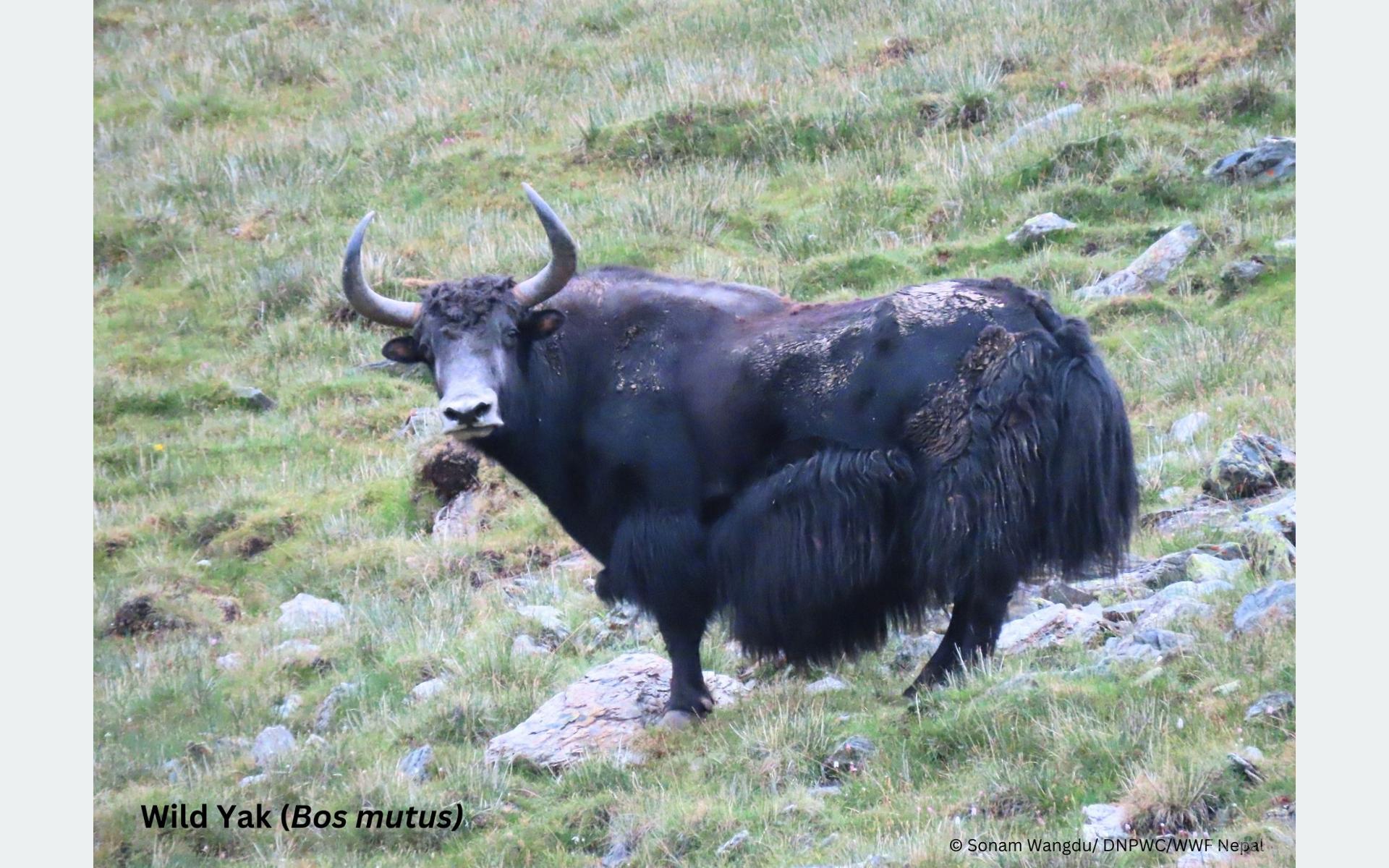A recent study revealed that a rare wild yak has been discovered in Nepal’s Shey-Phoksundo National Park. Local citizen scientist Sonam Wangdi documented the sighting of this male wild yak, which was reported at Shey-Phoksundo Rural Municipality-1 in Saldang at an altitude of 4,623 to 4,935 meters from July 23 to 26.
The Department of National Parks and Wildlife Conservation under the Ministry of Forests and Environment unveiled a framed photograph of the yak, captured by Wangdi. This study, conducted in partnership with Shey-Phoksundo National Park and the World Wildlife Fund (WWF) Nepal, involved input from the local community. Previously, the wild yak was considered endangered in the region due to a lack of documented sightings.
According to WWF Nepal’s Mountain Program Manager, Seren Shrestha, contributions from local and young scientists, including Sonam Wangdi and Urgen Gurung, were vital in this study. Shrestha further noted that another wild yak had reportedly been sighted near the Chinese border to the west of the current location, although further research is required to confirm if it was the same animal.
Native to alpine tundra and cold desert grasslands, wild yaks are predominantly found at around 4,825 meters above sea level. While winter may see them descend to lower valleys, the exact range of their habitat remains unclear. In Nepal, these animals are primarily seen along northern borders near Tibet. Known locally as “ban chauri,” wild yaks are classified as vulnerable on the International Union for Conservation of Nature (IUCN) Red List and are legally protected under Nepal’s National Parks and Wildlife Conservation Act (Appendix 1).
Senior Ecologist Haribhadra Acharya from the Department of National Parks reported that wild yaks belong to the cattle family, similar to domestic yaks and other species found in Nepal’s Terai and high-altitude areas. Due to challenging terrain, studies on the wild yak have been limited; however, advancements in aerial transport, road access, and technology are opening up new opportunities for wildlife research. Wild yaks have a larger physique, distinct horns, and different coat patterns, unlike domestic yaks, making them physically distinct.
Acharya emphasized that the recent photo release will likely spur further interest among researchers in studying the wild yak’s behaviors and habitats. This species shares its habitat with the snow leopard, although the yak’s grazing range is relatively restricted compared to the more widespread snow leopard.
Source: RSS






